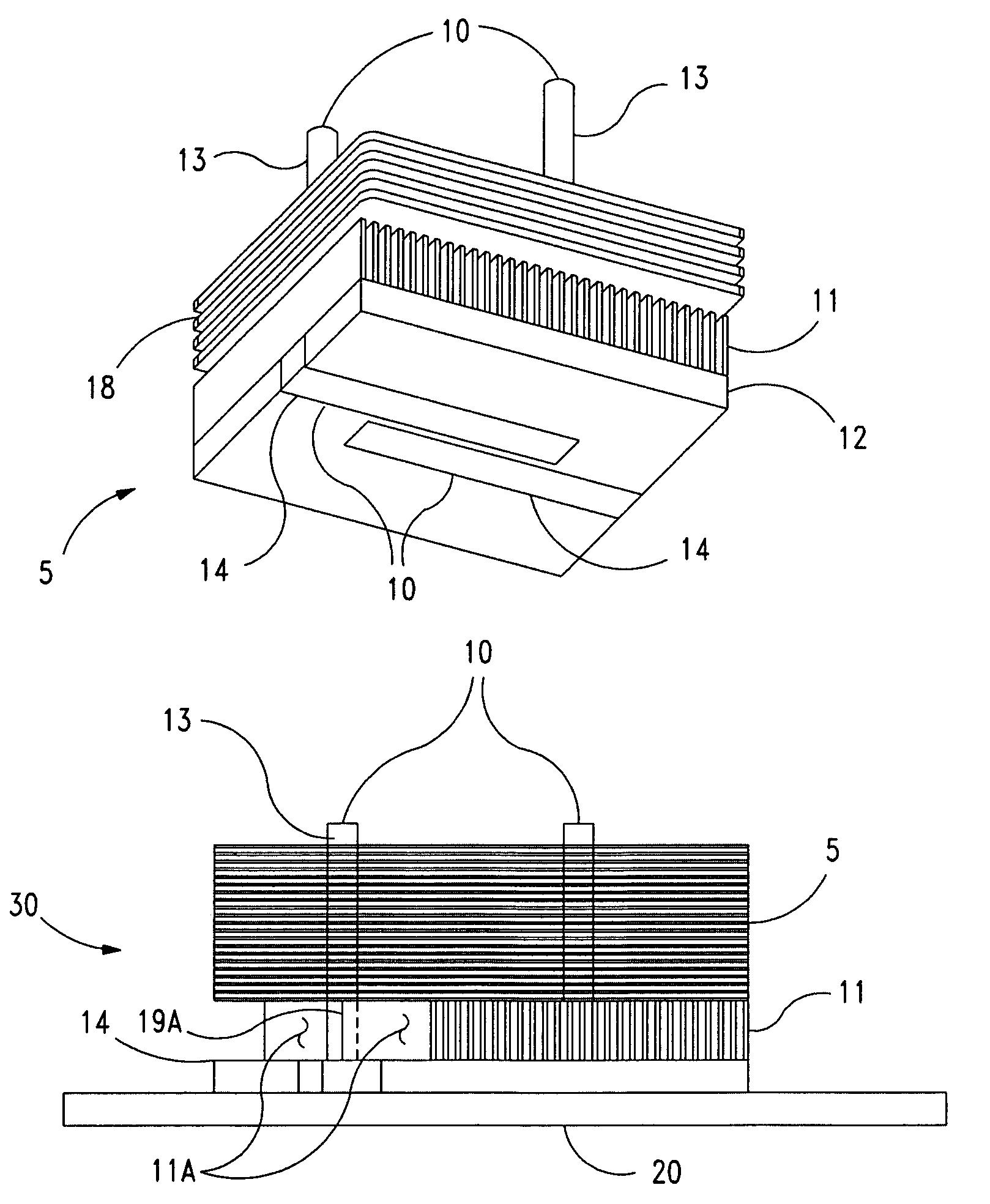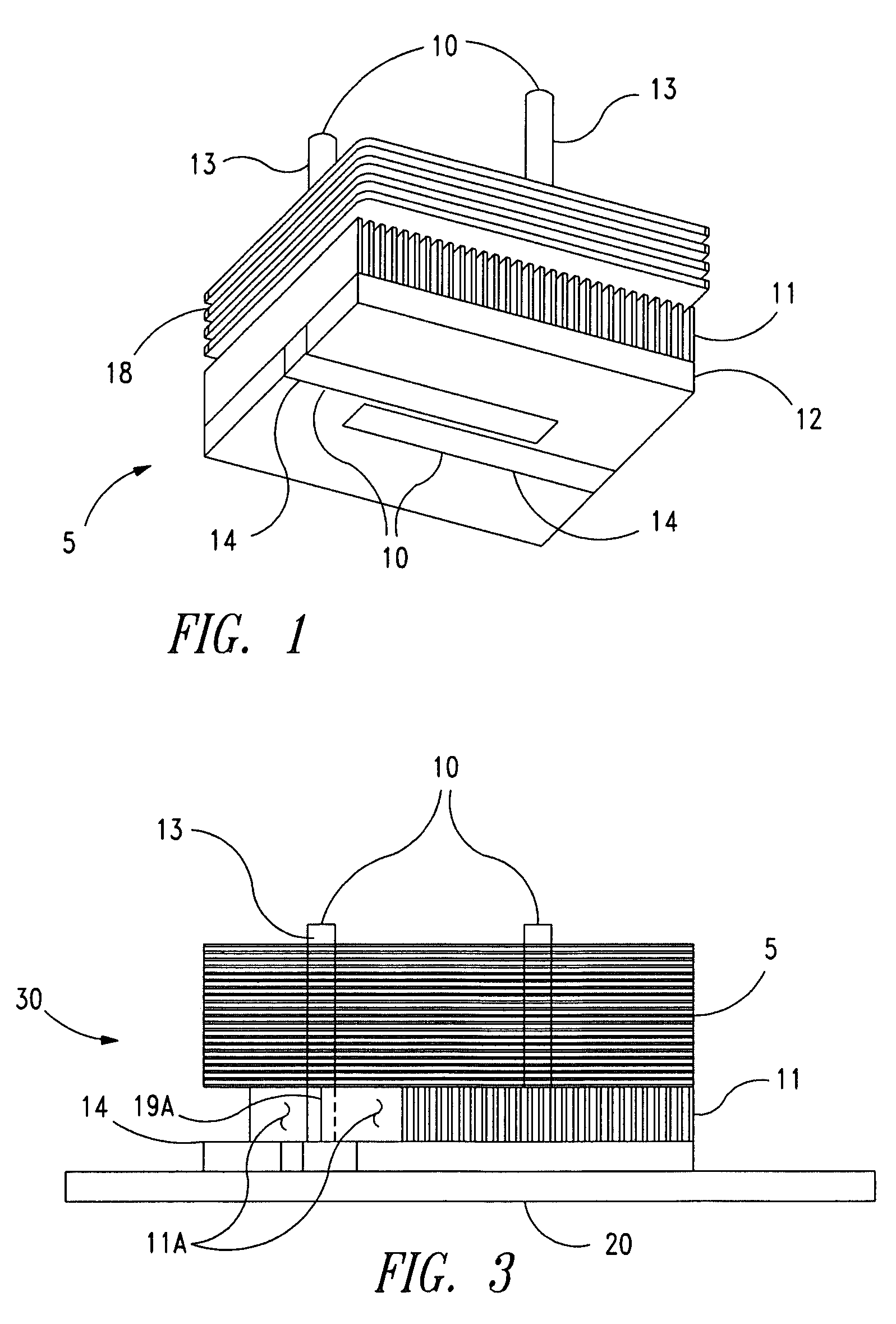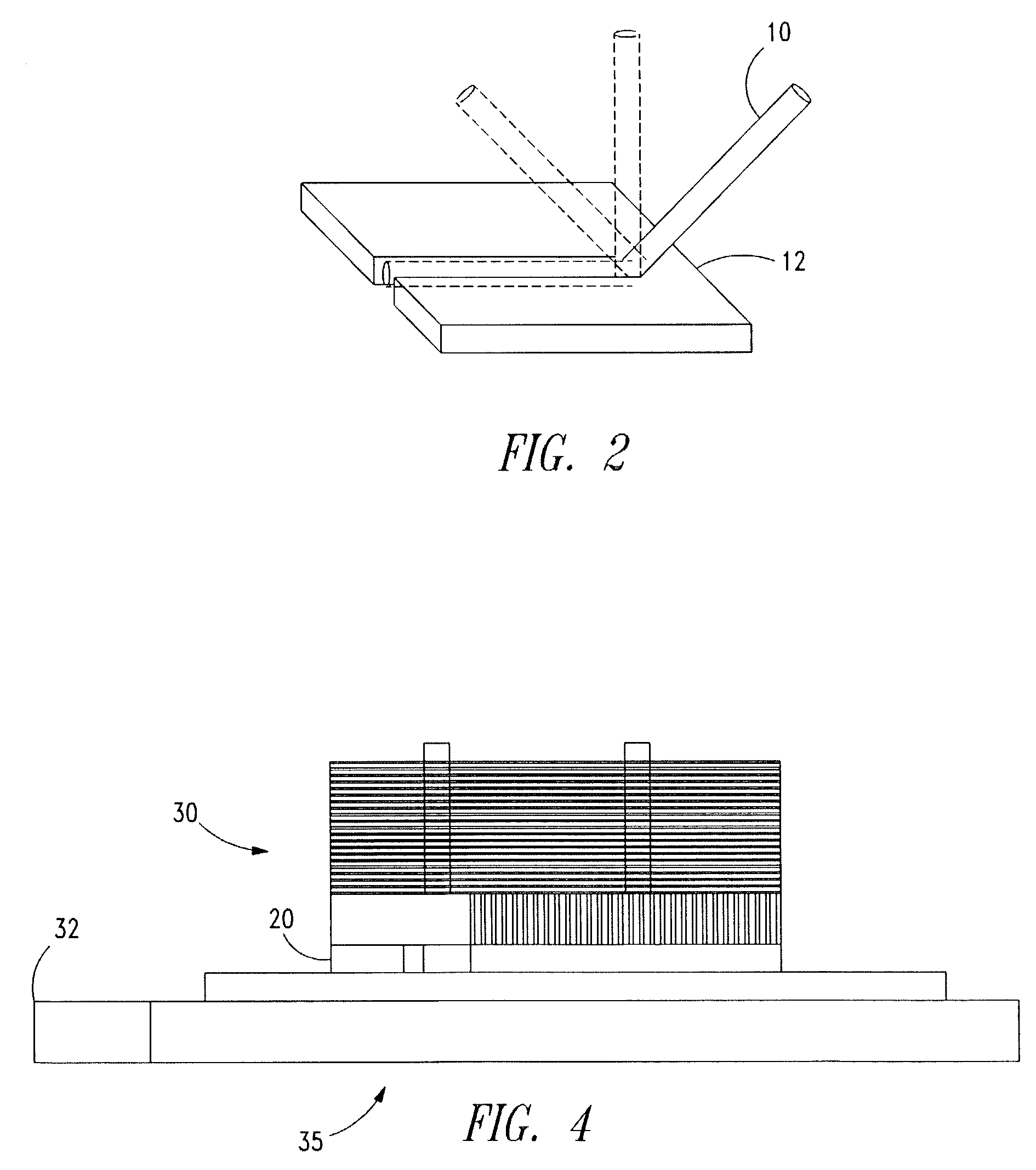Heat sink with angled heat pipe
a heat pipe and sink technology, applied in the direction of lighting and heating apparatus, semiconductor/solid-state device details, laminated elements, etc., can solve the problems of inefficiency, complex design of the base-pipe interface, failure to operate the electronic component, etc., to maximize the contact surface area, and heat is dissipated more efficiently
- Summary
- Abstract
- Description
- Claims
- Application Information
AI Technical Summary
Benefits of technology
Problems solved by technology
Method used
Image
Examples
Embodiment Construction
[0015]The following discussion is presented to enable one skilled in the art to make and use the invention. Various modifications to the disclosed embodiments will be readily apparent to those skilled in the art, and the generic principles herein may be applied to other embodiments and applications without departing from the spirit and scope of the present invention as defined by the listed claims. Thus, the present invention is not intended to be limited to the embodiments shown, but is to be accorded the widest scope consistent with the principles and features disclosed herein.
[0016]FIG. 1 is an isometric view of a heat sink 5 according to an embodiment of the invention. The heat sink 5 comprises multiple heat pipes although alternative embodiments only include one heat pipe. According to this embodiment, there are two heat pipes 10 attached to a base 12. A heat pipe 10 is attached to the base 12 in any conventional manner, including adhesive, form-fitted (“snap-on”), harnessed, b...
PUM
 Login to View More
Login to View More Abstract
Description
Claims
Application Information
 Login to View More
Login to View More - Generate Ideas
- Intellectual Property
- Life Sciences
- Materials
- Tech Scout
- Unparalleled Data Quality
- Higher Quality Content
- 60% Fewer Hallucinations
Browse by: Latest US Patents, China's latest patents, Technical Efficacy Thesaurus, Application Domain, Technology Topic, Popular Technical Reports.
© 2025 PatSnap. All rights reserved.Legal|Privacy policy|Modern Slavery Act Transparency Statement|Sitemap|About US| Contact US: help@patsnap.com



